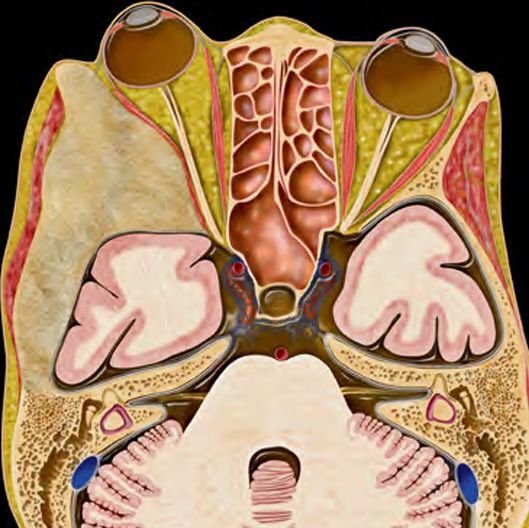Fibrous Dysplasia
Fibrous Dysplasia
Fibrous dysplasia (FD) is a rare, non-cancerous bone disorder where normal bone is replaced with fibrous tissue, causing abnormal growths, pain, deformity, and even functional impairment. In children, it often affects the skull and facial bones, leading to visible deformities, neurological symptoms, or vision problems. Though benign, fibrous dysplasia can be progressive and may need surgical intervention, especially in craniofacial involvement. In Bangladesh, due to lack of awareness and limited pediatric neurosurgical facilities, many children with skull fibrous dysplasia remain undiagnosed or improperly managed. Dr. Md. Nafaur Rahman, a leading pediatric neurosurgeon at the National Institute of Neurosciences & Hospital (NINS) and Bangladesh Paediatric Neurocare Centre, offers expert diagnosis and surgical management of this condition using advanced techniques and a child-friendly approach. What Is Fibrous Dysplasia? Fibrous dysplasia is a developmental bone disorder caused by a gene mutation (GNAS gene), leading to the replacement of normal bone with fibrous tissue. This weakens the bone and leads to swelling, deformity, fractures, or compression of adjacent organs. It is categorized into: Monostotic fibrous dysplasia – affects one bone (most common in children) Polyostotic fibrous dysplasia – affects multiple bones McCune-Albright Syndrome – polyostotic FD with skin pigmentation and hormonal abnormalities Common Sites in Children Skull and facial bones – frontal, temporal, sphenoid, and maxilla Femur, ribs, humerus When involving craniofacial bones, it can lead to neurological complications Clinical Features in Pediatric Patients Depending on the site and extent, symptoms may include: Painless swelling or mass in the skull or face Facial asymmetry or deformity Visual disturbance due to optic canal narrowing Hearing loss if temporal bone is involved Headache, seizures, or nerve compression symptoms Bone pain or pathologic fractures in long bones Skin café-au-lait spots and early puberty (in McCune-Albright Syndrome) In Bangladesh, many patients first present to general physicians or ENT specialists due to facial deformity or eye problems. Diagnosis Dr. Nafaur Rahman follows a systematic approach for timely and accurate diagnosis. 1. Clinical Evaluation Assessment of swelling, facial deformity, neurological signs History of progression, pain, or hormonal symptoms 2. Imaging CT Scan (Bone Window): Best for skull lesions; shows “ground-glass” appearance MRI: Evaluates soft tissue, optic nerve involvement, or brain compression X-ray: For long bone involvement Bone Scan: To detect other asymptomatic sites in polyostotic cases 3. Biopsy Performed if diagnosis is uncertain Confirms presence of fibrous tissue with irregular bone trabeculae Management Approach The treatment depends on the location, severity of symptoms, and risk of complications. A. Observation Asymptomatic lesions may be monitored periodically Regular follow-up with CT/MRI to track growth B. Surgical Management Surgery is considered when there is: Progressive deformity Neurological compression (e.g., optic nerve, cranial nerves) Cosmetic concern Fracture risk or functional limitation Types of Surgery Cranial remodeling or contouring for cosmetic correction Decompression of optic nerve or cranial nerves Excision and reconstruction of affected bone if feasible Cranioplasty using bone grafts or synthetic materials Dr. Nafaur Rahman uses neuronavigation, micro-drilling, and minimally invasive tools to ensure precision, cosmetic safety, and excellent outcomes. Prognosis Most cases stabilize after puberty With proper surgical treatment, outcomes are excellent Cosmetic satisfaction is high in skull remodeling procedures Long-term follow-up is essential to monitor recurrence or progression Challenges in Bangladesh Misdiagnosis as tumors, cysts, or infections Lack of awareness among general practitioners Inadequate pediatric imaging in rural areas Delay in referring to pediatric neurosurgeons Cosmetic stigma affecting psychological well-being in school-going children Why Choose Dr. Md. Nafaur Rahman? Nationally recognized for managing complex craniofacial and skull bone lesions in children Uses advanced imaging, surgical tools, and cosmetic-focused techniques Offers multidisciplinary care with radiology, endocrinology, and reconstructive surgery teams Child-centered approach ensuring both medical and emotional support Provides care at both government and private pediatric neurosurgery setups in Bangladesh Contact for Appointment Dr. Md. Nafaur Rahman Assistant Professor, Pediatric Neurosurgery National Institute of Neurosciences & Hospital (NINS) Chief Consultant, Bangladesh Paediatric Neurocare Centre 📞 Serial & Appointment: 01912988182 | 01607033535 🌐 Website: www.neurosurgeonnafaur.com










